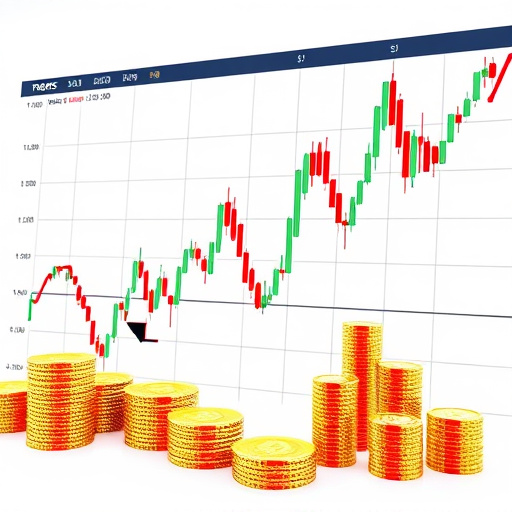Rapid and unpredictable currency fluctuations significantly impact Sydney's forex market, driven by global economic policies, interest rates, geopolitical events, and market sentiment. These changes can lead to swift appreciation or depreciation of currencies, affecting all participants. Australia's strategic location and strong trading positions make Sydney's forex market highly active, presenting both challenges and opportunities. To navigate this volatility, traders must stay informed about global events, diversify portfolios, employ dynamic stop-loss orders, and leverage technical analysis tools for informed decision-making. The 2008 Global Financial Crisis (GFC) highlighted the impact of currency fluctuations, with dramatic AUD swings, underscoring the importance of understanding historical trends and current events in Sydney's forex landscape.
Rapid currency fluctuations are a defining feature of today’s global financial landscape, significantly impacting Sydney’s foreign exchange (forex) market. This article delves into the dynamic interplay between these volatility spikes and forex decisions in Australia’s largest city. We’ll explore how sudden shifts in exchange rates affect trading strategies, analyzing historical case studies to understand the long-term effects on Sydney’s forex landscape. Key insights will guide traders navigating this uncertain environment.
- Understanding Rapid Currency Fluctuations: A Sydney Forex Perspective
- The Impact on Forex Decisions: Strategies for Navigating Uncertainty
- Case Studies: How Fluctuations Have Shaped Sydney's Forex Landscape Historically
Understanding Rapid Currency Fluctuations: A Sydney Forex Perspective

Rapid and unpredictable currency fluctuations can significantly impact decisions in the Sydney forex market, where traders and investors are continually on edge. These variations are often driven by a myriad of global factors, including economic policies, interest rates, geopolitical events, and market sentiment. For instance, sudden changes in a major economy’s performance can cause its currency to appreciate or depreciate swiftly, affecting all other currencies in its wake.
In Sydney, where the forex market is highly active due to Australia’s robust trading positions and strategic location, these fluctuations present both challenges and opportunities. Traders must stay informed about global events and economic indicators to anticipate market movements. This constant vigilance is crucial for making timely decisions, as even minor shifts can lead to substantial profits or losses in a short period. Understanding the dynamic nature of currency exchange rates empowers Sydney-based forex participants to navigate these fluctuations effectively.
The Impact on Forex Decisions: Strategies for Navigating Uncertainty

Rapid currency fluctuations can significantly sway Sydney forex decisions, creating an environment of uncertainty for traders. When exchange rates change dramatically in a short period, it becomes challenging to predict market movements accurately. This volatility can impact both long-term investment strategies and short-term trading opportunities.
To navigate these unpredictable conditions, forex traders in Sydney should adapt their strategies. Diversifying one’s portfolio across multiple currencies can help spread risk during volatile periods. Implementing dynamic stop-loss orders and taking calculated risks based on technical analysis tools can also mitigate losses. Staying informed about economic indicators and global events that influence currency values is crucial for making timely decisions.
Case Studies: How Fluctuations Have Shaped Sydney's Forex Landscape Historically

Rapid currency fluctuations have significantly shaped Sydney’s forex landscape historically. Take, for instance, the period leading up to and during the Global Financial Crisis (GFC) in 2008. The Australian Dollar (AUD), a major player in the Sydney forex market, experienced dramatic swings due to global economic uncertainty. This volatility forced many traders to adopt more cautious strategies, influencing decision-making processes for both retail and institutional investors.
Historically, fluctuations have also been driven by domestic factors like interest rate changes, trade balances, and political events. For example, the introduction of new monetary policies by the Reserve Bank of Australia (RBA) can prompt significant shifts in the AUD’s value. These cases underscore the dynamic nature of Sydney’s forex market, where historical trends and current events intertwine to create unique challenges and opportunities for participants.
Rapid currency fluctuations are an ever-present reality in the global forex market, and Sydney is no exception. As highlighted in this article, these swings can significantly influence trading decisions, presenting both challenges and opportunities for Forex traders in Australia. By understanding the factors driving currency movements and adopting strategic approaches to navigate uncertainty, individuals and businesses alike can make informed choices in this dynamic landscape. Historical case studies demonstrate that while fluctuations can cause short-term volatility, they also offer long-term growth potential, making it crucial for Sydney forex participants to stay adaptable and responsive.
